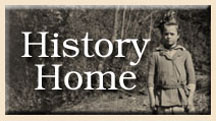

Contemporary Arrowmont: Page 3
On considering Blain’s long tenure (1979-2001), one might easily assert that it was she, more so than anyone else, who guided Arrowmont into the modern era. After all, most of the important developments that make the school what it is today -- the diverse curriculum; the outstanding gallery program; the exhibitions and conferences; the first-rate faculty; the programs designed to assist promising professional artists -- originated during her twenty-two years of service, and may be attributed in one way or another to her leadership. For that matter, Blain oversaw a massive renovation/construction project which saw virtually every existing structure on the Arrowmont campus receive a facelift -- including the Red Barn, the Stuart Cottage, the Staff House kitchen, the administrative offices, and the book and supply store -- and a series of new structures -- such as the Staff House dining room (1989), the Hughes Hall Dormitory (1995), the painting studio (1995), the wood studio facility and gallery (1996), and the new Pollard Cottage (1999) -- added to the campus. With these renovations completed, and the new structures in place, administrators were no longer forced to shuffle students, faculty, and classes between outdated buildings dating back to the Settlement School era. This served to enhance the school’s reputation, enabling it to better compete with other arts and crafts schools for faculty and students.
Since 2001, the year that Blain stepped down, Arrowmont has been under the direction of David Willard. In the six short years since he arrived in Gatlinburg, Willard has been highly successful in reinvigorating the relationship between Arrowmont, Pi Beta Phi, and the Gatlinburg community (all of which had waned to a certain extent following the closure of the Settlement School in 1965). Not only has he taken an active role in community affairs, participating in local organizations such as the Gatlinburg Gateway Association (an organization dedicated to bringing about civic improvements in Gatlinburg, such as the recent decision to bury the town’s power lines); he has worked closely with Pi Beta Phi officials and the University of Tennessee Libraries to complete and promote the “Pi Beta Phi to Arrowmont” project. Thanks in large part to his efforts, researchers, artists, Gatlinburg residents, Pi Phis, and others interested in the Pi Beta Phi Settlement School/Arrowmont story now have access to thousands of letters, photos, diary pages, and other items gleaned from the Arrowmont archives. They may also view scrapbooks compiled by Settlement School teachers and nurses, a 360-degree interactive gallery of contemporary art objects housed at Arrowmont, and read a collection of historical essays which tell the story of the Settlement School’s evolution from a Progressive Era education service project into one of the nation’s premier centers for the promotion of arts and crafts literacy.
Finally, under Willard, Arrowmont continues to be a leader in the arts and crafts community. For not only does it educate artists of all skill levels; it continues to serve as pioneer in the field of arts and crafts literacy. As Board member Lloyd Herman put it in early 2007, Arrowmont has staked out a place for itself by continually introducing “new forms (baskets and turned bowls, for example), new materials (polymer clay, precious metal clay), and new methods (digital everything).” This, he insisted, represents Arrowmont’s “unique contribution” to the modern art world, setting it apart from similar institutions.
| <<< Page 2 | Page
3 |
 |
|